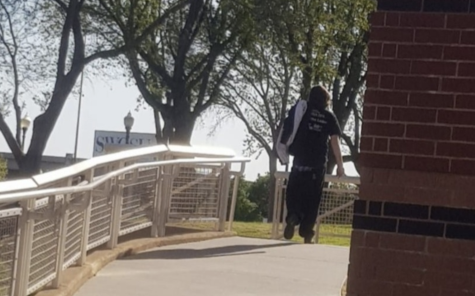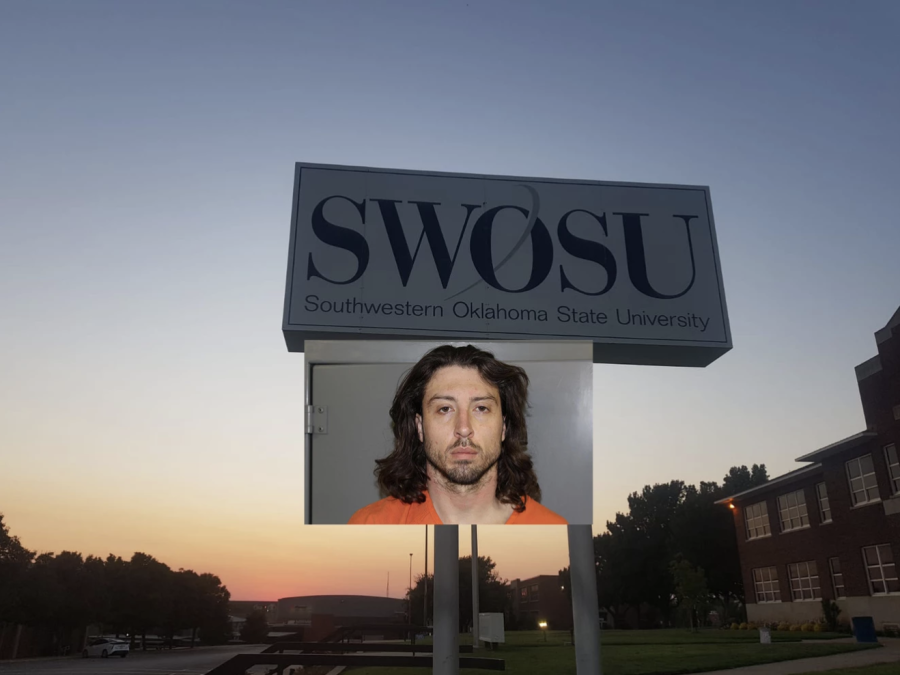Why didn’t SWOSU warn students of Brandon Woods breaking into dorms?
April 21, 2021
Brandon Ray Woods is a Weatherford resident with criminal background. During the course of spring semester 2021, he was arrested twice for breaking into dormitories at SWOSU. Most students had not been aware of the matter until The Southwestern reported about it, because the administration chose not to warn its student population. Could that have violated the Clery Act of 1990 by the federal government?
During his life, Woods has been caught multiple times with amphetamines and drug paraphernalia. He has resisted arrests. And several times, he allegedly committed trespassing on the SWOSU campus in 2021.
On Feb. 24, Woods was arrested by SWOSU PD for breaking into Henrietta Mann Hall to take a shower on the 4th floor – a female-only floor. A resident who lives on the same floor contacted us, saying that she was unaware until the middle of March when she read our story over the incident.
“I personally feel like the dormitory is trying to hide the matter.”

On March 15, only 3 days after Woods was bailed out of jail, he was arrested for breaking into Married Housing, where he was located in a bathroom. On April 10, he was spotted on the campus having a towel over his shoulder. Currently, Woods has an outstanding warrant due to failure to show up in court.
The SWOSU administration decided not to warn its students and dorm residents about the matter. Instead, it took rumors among students, a detailed search in the Oklahoma State Courts Network, and a request for and study of case files from the Custer County court to inform about a criminal who was unlawfully entering dormitories at SWOSU. So why did the administration decide against making students aware of Brandon Woods in the first place?
“Not in line with someone exhibiting a threat”
According to Brian Adler, vice president of public relations & marketing, the possibility of notifying students about Brandon Woods was indeed considered.
Adler: “Res Life inquired with the Dean of Students Office and others about possibly posting a picture of him at the doors of the buildings as a way to notify residents. The consensus was that Brandon Woods had violated a ‘no trespass’ order, which is not in line with someone exhibiting a threat of harm or violence. Both offices felt the best course of action was to reiterate the need for residents to be educated on personal safety, keeping doors and property secured, and the need to pay attention to their surroundings.”
As a matter of fact, Woods is charged with “willfully and intentionally breaking and entering into Henrietta Mann Hall, (…) without permission and without the intent to commit any crime.”
In other words: The SWOSU administration did not consider Woods enough of a threat to feel the need to notify students, thereby possibly causing panic among them and their parents.
However, posting a picture might have helped students identify Woods in case he was on campus. This would have been extremely helpful for law enforcement, especially since he has an outstanding warrant since last week.
Did SWOSU violate the Clery Act? Maybe.

The Jeanne Clery Disclosure of Campus Security Policy and Campus Crime Statistics Act, or Clery Act, is a federal statute signed in 1990. It applies to all institutions that participate in the federal financial aid program, among them SWOSU. It is named after Jeanne Clery, who was raped and murdered in April 1986 at Lehigh University. Her parents argued in court that the university’s crime record of 38 violent crimes in three years was unknown to them, and Jeanne would not have attended the university if she had been aware of this statistic. They won.
The Clery Act requires institutions to publish an annual security report, maintain a daily crime log, keep the most recent 8 years of crime statistics and give timely warnings of crimes that could be a threat to the safety of students, faculty or staff.
The crimes that are covered by the Clery Act include offenses such as murder, sex offenses, robbery, or burglary, among many others. Arrests have also to be published, if they fall under weapon or liquor law violations or drug abuse, and if they are referred to disciplinary action.
Woods, however, was charged with trespassing and drug possession, which are not crimes included in the Clery Act (unless a drug abuse arrest is made that is referred to disciplinary action, which is not the case since Woods is not a student). Also, he never committed any other offenses on SWOSU property. He did not threaten students or stole from them. Purely based on these facts itself, SWOSU is indeed not required to have Brandon Woods’ alleged crimes covered in the crime statistics.
But what about the requirement to warn students of crimes that could pose a threat to students’ safety, even if they don’t fall under the categories covered by the Clery Act?
In fact, on Feb. 24, Woods was charged not only with trespassing, but also with possession of a controlled dangerous substance (amphetamine) and drug paraphernalia. Moreover, he has a proven history of drug abuse, according to court records. Amphetamine is known for making its users’ behavior unpredictable. Additionally, SWOSU PD officer Justin Simpson, who conducted the arrest, wrote in the affidavit of probable cause that he decided to call for backup because the suspect showed signs of resistance.
All of those points could very well be a good argument that Woods could pose a serious threat to the safety of students under the wrong circumstances and that SWOSU indeed had to warn its students of him. The SWOSU administration, however, had a different opinion, and did not see Woods as a threat.
If you see Brandon Woods on campus, call SWOSU PD via (580) 774-3111.
Editor’s note: Readers are reminded that information in this article supported by an affidavit of probable cause is merely an allegation that a crime has been committed and that there is only probable cause to believe a crime has been committed. The suspect is presumed innocent throughout the proceedings. The State is obligated to provide proof beyond a reasonable doubt before a judgment of guilt may be made.


